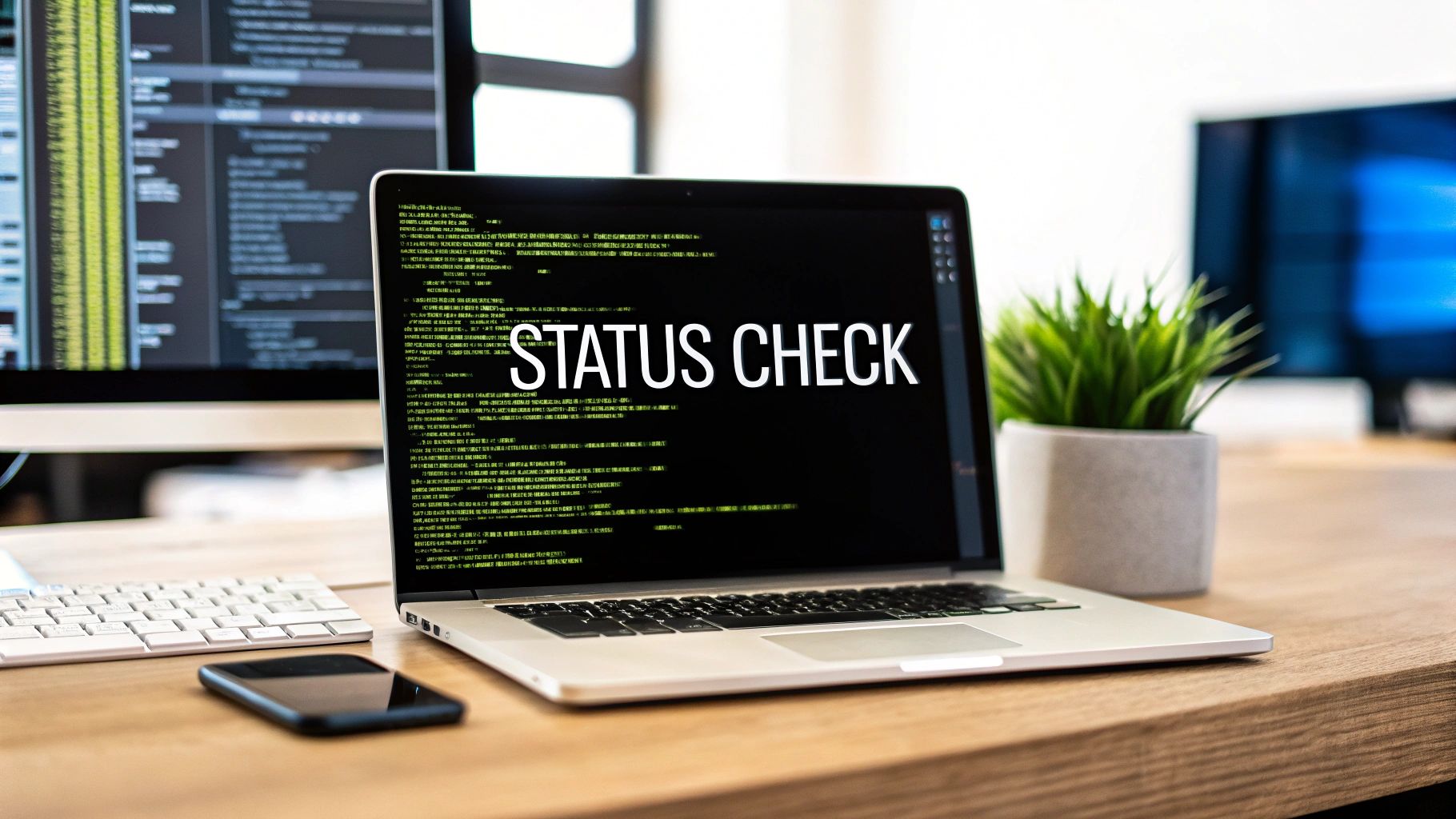GitHub Add Status Check: Quick Guide
Decoding GitHub Status Checks: Why They Matter
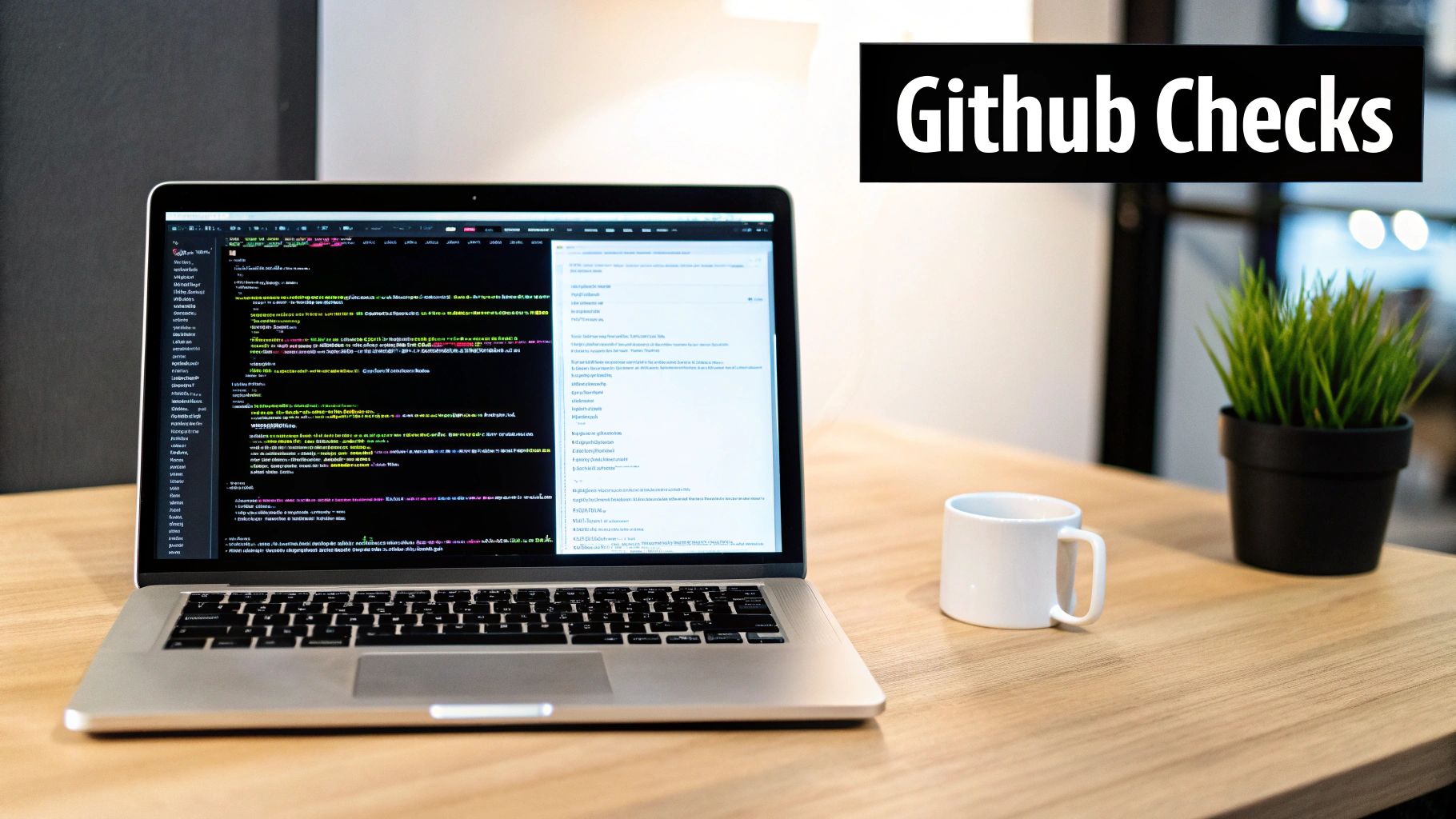
Maintaining high code quality across collaborative projects can be a real headache. This is where GitHub status checks come in. Think of them as automated gatekeepers for your codebase, ensuring that only reliable code makes it into your project. They represent a significant improvement in how teams manage code, allowing them to catch errors early on.
This early detection prevents small issues from snowballing into larger, more complex problems down the line. For any team serious about code quality and streamlined workflows, understanding and implementing these checks is essential.
Branch Protection and Status Checks
One key reason status checks are so valuable is their integration with branch protection rules. Branch protection rules in GitHub let administrators set specific conditions that must be met before any code can be merged into protected branches. Common examples of these protected branches are main and develop.
By linking status checks to these rules, teams create a robust quality assurance process. This helps prevent accidental merges of incomplete or untested code, safeguarding the stability of your main branches.
Required vs. Optional Checks
GitHub status checks offer two main types: required and optional. Required checks, as the name suggests, must pass successfully before merging a pull request. This guarantees that all essential tests and validations are carried out.
Optional checks, on the other hand, provide supplementary information but won't block a merge. This flexibility allows teams to tailor their workflow. You can monitor aspects like style guides or code coverage without bringing the entire merge process to a screeching halt. This dual approach provides a great balance between rigorous enforcement and practical adaptability.
Understanding Check States
Status checks can have several states: pending, success, failure, and error. Knowing what each state represents is crucial for interpreting check results and taking the right action.
- Pending: The check is still running.
- Success: The check passed all criteria.
- Failure: The check did not meet the defined requirements.
- Error: There was a problem with the check itself.
This transparent system ensures developers can quickly pinpoint issues and fix them promptly. Interestingly, GitHub status checks were first introduced through the GitHub API back in 2013. Since then, they have become a fundamental part of continuous integration workflows for development teams of all sizes. For a deeper dive into their history, learn more about status checks history here.
The Benefits of Effective Status Checks
Implementing GitHub status checks effectively leads to better code quality and faster development. By preventing broken builds and integration headaches, teams spend less time on bug fixes and more time on building new features. For a comprehensive guide, check out this resource: How to master GitHub status checks.
Using both required and optional checks, along with branch protection rules, gives teams the power to customize their quality assurance process. This targeted approach results in a more streamlined and efficient development workflow, ultimately delivering better software.
Setting Up Your First Status Checks That Actually Work
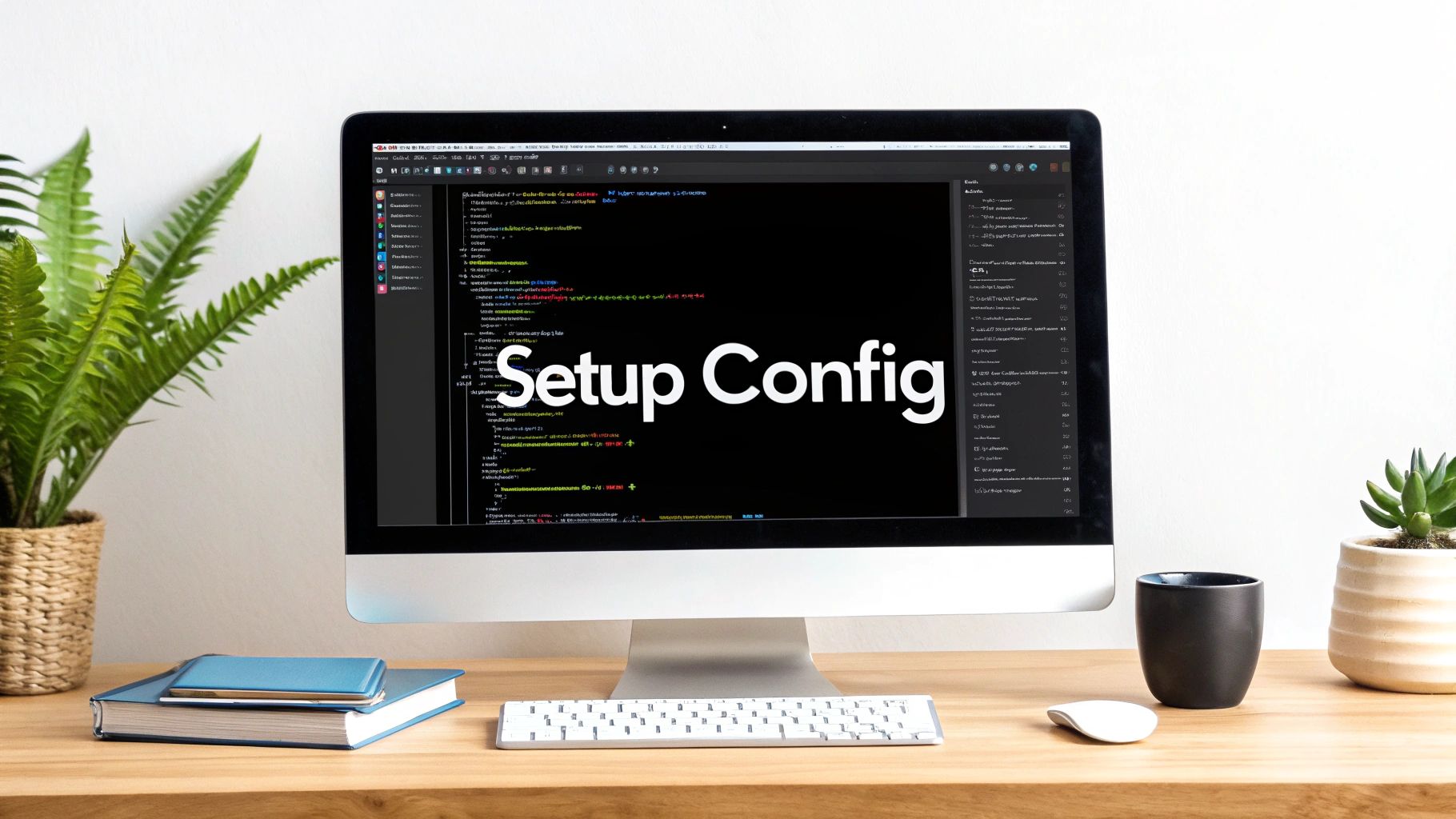
Now that we understand why status checks are so important, let's explore how to actually set them up. Adding a GitHub status check might seem intimidating, but it's a simple process with major payoffs down the line. This section will walk you through implementation, whether you're working with a brand new repository or adding checks to an existing project.
Configuring Repository Settings for Status Checks
First, navigate to your repository settings and find the "Branches" section. This is where you'll configure branch protection rules. These rules determine which branches require status checks and what those checks will be. This targeted approach helps keep key branches, like your main branch, stable and reliable.
Navigating Permissions and Team Dynamics
Implementing status checks successfully often means thinking about your team. You'll need the right permissions to set up branch protection rules, usually administrator access. Plus, introducing new processes can sometimes be met with a little pushback. Clearly communicating the benefits of status checks to your team is key for a smooth rollout.
Practical Approaches for Phasing In Status Checks
You don't have to implement all status check requirements at once. Start small with a few essential checks, maybe focusing on tests for your core features. As your team gets comfortable, you can gradually introduce more checks, minimizing disruption to your workflows. This iterative process helps everyone adapt and recognize the value of checks. And speaking of value, studies show required status checks correlate with a 60% decrease in broken builds and a 45% reduction in the time spent fixing integration issues. Find more detailed statistics here.
To help visualize the different types of status checks and their implementation, take a look at the table below:
Status Check Types Comparison
Comparison of different types of status checks and their use cases
| Check Type | Use Case | Implementation Complexity | CI/CD Integration | |---|---|---|---| | Linting | Code style and potential errors | Low | Easy | | Unit Tests | Testing individual components | Medium | Easy | | Integration Tests | Testing interactions between components | High | Medium | | Custom Checks | Project-specific requirements | Varies | Varies |
This table highlights the varying complexities and integration possibilities, offering a guide for choosing the right checks for your project. Starting with simpler checks like linting can provide immediate benefits, while more complex checks like integration tests can be phased in as your project matures.
Real-World Examples of Gradual Implementation
Many teams find success with a phased approach. A project might begin with a simple linting check. Then, as the project grows, they add checks for unit tests, integration tests, and even custom checks for their unique needs. This creates a flexible quality assurance process that scales with the project's complexity. This measured, step-by-step approach allows teams to gradually refine their code review process. Using tools like Pull Checklist can further enhance your management and automation of these checks within GitHub pull requests, improving consistency and reducing mistakes. Learn more about Pull Checklist and its features here.
Building Custom Status Checks Your Team Will Thank You For
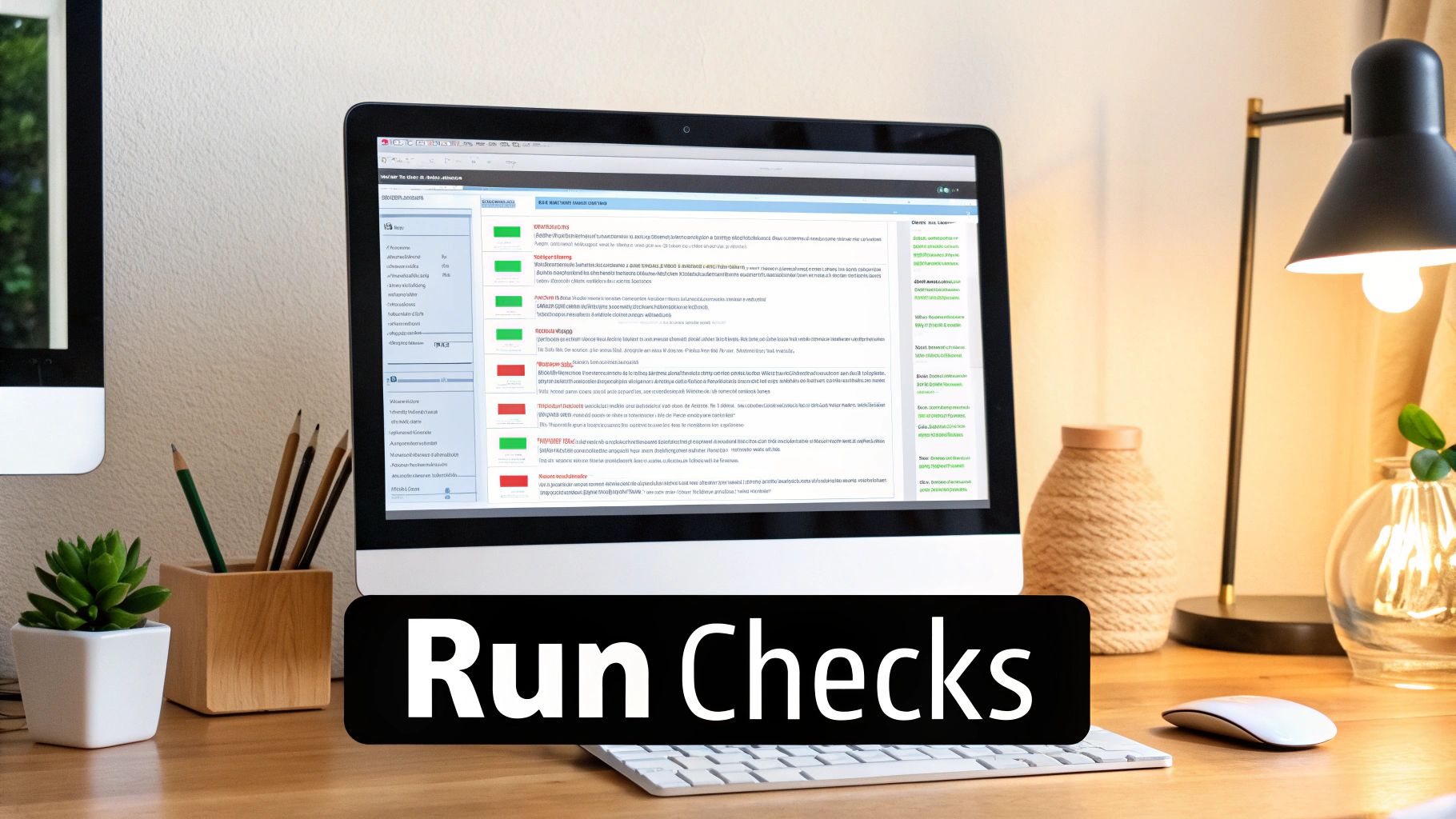
While pre-built CI tests provide a good starting point, the real power of GitHub status checks comes from creating custom validations. These checks are designed to meet the specific requirements of your project. This helps development teams find and fix project-specific problems early on.
GitHub Checks API vs. Status API: Choosing the Right Tool
When creating custom GitHub status checks, you’ll work with two main APIs: the Checks API and the Status API. The Status API offers basic pass/fail results. The Checks API, on the other hand, gives you more flexibility.
The Checks API provides detailed reports, inline annotations, and interactive features for more useful feedback to your developers. This more detailed approach means you can provide very specific information directly within the code review process.
For example, instead of just flagging a failed test, the Checks API lets you pinpoint the exact lines of code causing the problem. You can even suggest solutions. This improved feedback loop makes debugging faster and helps prevent similar issues from popping up again. Introduced in 2018, the Checks API offers richer functionality than the older Status API. It allows developers to create more sophisticated status checks including the detailed reports and annotations mentioned above. Learn more about the Checks API Public Beta here.
Implementing Custom Checks: Authentication and Webhooks
Correct authentication is essential for setting up custom checks. Using a GitHub App or a personal access token secures the communication between your check and the GitHub repository.
Webhooks enable your checks to run automatically. They trigger your custom logic every time a pull request is created or updated. This automation removes the need for manual steps and tightly integrates your checks into your development workflow. For a helpful guide on GitHub status checks, see this post.
Building Effective Validation Logic
The core strength of custom checks lies within the validation logic. This logic defines the specific criteria your code must meet. Think of it as a customized rulebook enforcing your project's coding style, security protocols, and even business requirements.
Common API Pitfalls and Optimization Strategies
As your project grows, you might run into some common API issues. Rate limiting can control how often your checks interact with GitHub. Timeouts can stop checks from finishing if they take too long. Understanding these potential problems and using optimization strategies – such as caching and efficient data retrieval – ensures your custom checks run smoothly, even on larger projects.
For further information, consider How to Master Pull Requests With Pull Checklist. Pull Checklist can complement your custom checks by automating and simplifying your workflow. This helps your team identify and resolve issues early, leading to higher quality code.
Building Robust and Scalable Status Checks
Creating robust and scalable GitHub status checks involves understanding authentication, webhooks, and how to optimize API calls. This multi-layered approach builds a system that automatically catches issues before they impact production. By addressing rate limiting, timeouts, and optimizing data retrieval, you ensure that your checks function efficiently and scale effectively with your project’s growth. The result is a smoother development process with faster iteration and more dependable releases.
Connecting CI/CD Tools That Supercharge Your Workflow
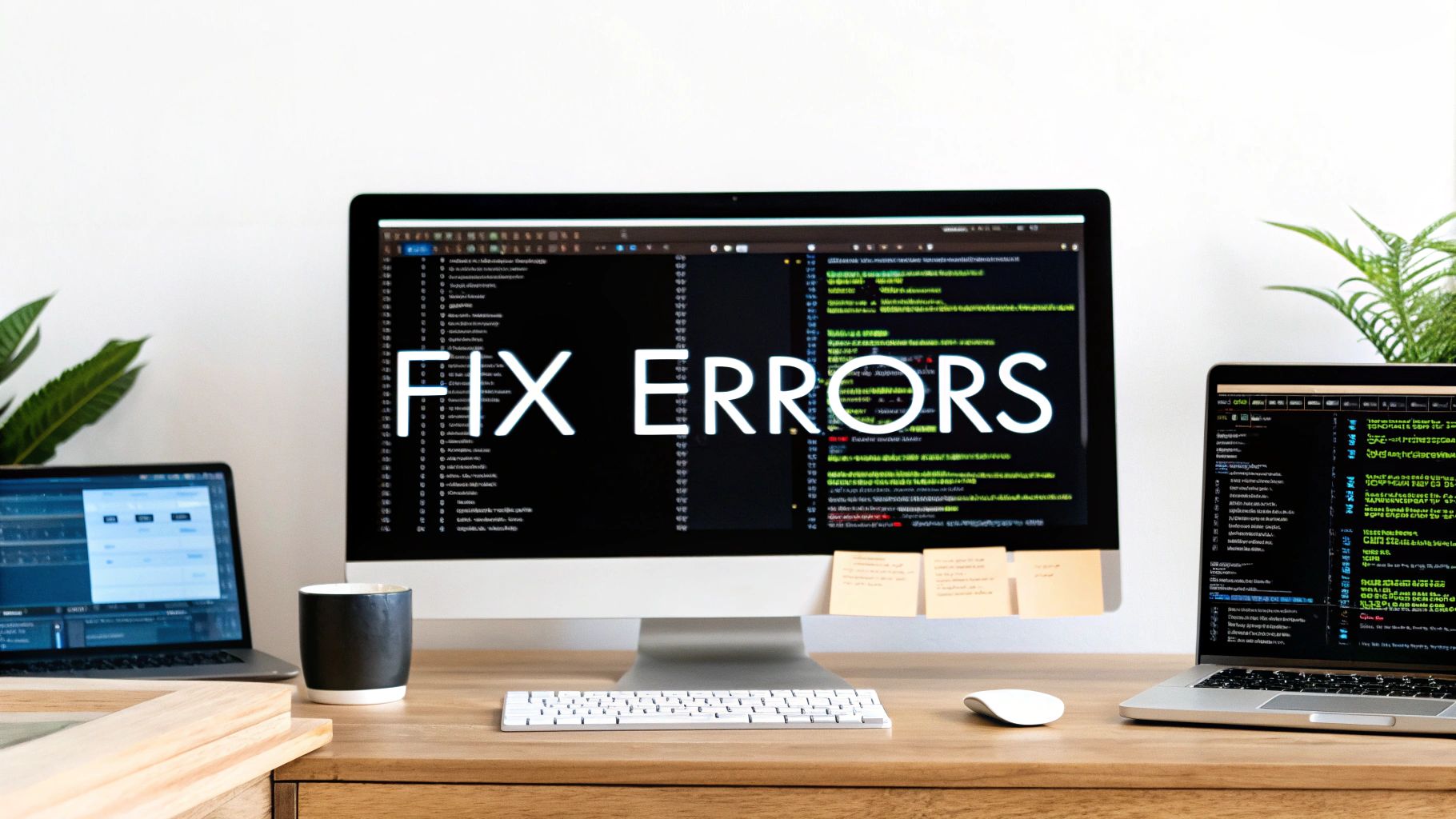
Integrating your CI/CD pipeline with GitHub status checks is crucial for a smooth and efficient development process. This connection allows for automated feedback and ensures code quality before merging changes. This section offers practical steps for connecting popular CI/CD platforms, empowering your team to maximize productivity.
GitHub Actions: Built-In Power
GitHub Actions offers the most seamless integration, being native to the platform. Setting up status checks is typically as simple as adding a few lines to your workflow file. This tight integration allows for efficient management of your entire CI/CD process without leaving GitHub.
-
Authentication: GitHub Actions automatically handles authentication within the repository. This eliminates the need for complex token management.
-
Parallel Checks: Run multiple checks concurrently to accelerate your feedback loop. This ensures quicker identification and resolution of any issues.
Jenkins: The Versatile Veteran
Jenkins, known for its extensibility, connects with GitHub using the GitHub plugin. This plugin enables Jenkins to update GitHub status checks based on build results, enabling better tracking and workflow control.
-
Authentication: Use a GitHub App or personal access token to secure the connection between Jenkins and GitHub.
-
Advanced Workflows: Trigger Jenkins builds based on GitHub events like pull requests or pushes. Configure GitHub to block merges until the Jenkins builds complete successfully. This means that problematic code won't reach your main branch.
CircleCI: Cloud-Based Simplicity
CircleCI, a cloud-based CI/CD platform, integrates seamlessly with GitHub through its built-in GitHub integration. This streamlines the process of updating GitHub add status check configurations.
-
Authentication: Securely link your CircleCI account to your GitHub repositories for automated status updates.
-
Parallelized Checks: Similar to GitHub Actions, CircleCI can run multiple checks in parallel. This greatly speeds up your testing phase and provides faster feedback to developers.
Travis CI: Another Cloud-Based Option
Travis CI offers similar cloud-based integration capabilities, providing a smooth connection to GitHub. Their integration simplifies the setup of GitHub add status check procedures.
-
Authentication: Authorize Travis CI to access your GitHub repositories for automated status updates. This ensures that your status checks are updated dynamically.
-
Automated Deployment Approvals: Configure status checks to require manual approval before deployment. This gives you granular control over releases.
Troubleshooting Common Integration Issues
Even with seamless integrations, issues can arise. Common problems include checks stuck in pending states, inconsistent results, or slow performance. Careful monitoring of logs, proper configuration, and sometimes, restarting services can often resolve these issues. Additionally, ensuring your CI/CD tools are updated to their latest versions can prevent compatibility problems.
To understand the benefits of CI/CD and status checks, let's look at the following comparison:
CI/CD Platform Integration Comparison
| Platform | Setup Complexity | Features | Limitations | Best For | |---|---|---|---|---| | GitHub Actions | Simple | Built-in, parallel checks | Limited third-party integrations | Projects already on GitHub | | Jenkins | Moderate | Extensible, advanced workflows | Requires plugin setup | Complex pipelines, diverse toolchains | | CircleCI | Simple | Cloud-based, parallel checks | Can be costly for large projects | Cloud-native projects | | Travis CI | Simple | Cloud-based, automated approvals | Limited customization | Open-source projects, simpler workflows |
This table highlights the strengths and weaknesses of each platform, allowing you to choose the best fit for your needs.
It is important to remember that repositories using status checks with continuous integration detect bugs 70% faster than those relying solely on manual code reviews. Automated tests also catch an average of 42% more issues before they reach production. Find more detailed statistics here. By proactively addressing these potential challenges, you can maintain a healthy and efficient CI/CD pipeline. Using a tool like Pull Checklist can further enhance this integration by automating checklist completion based on successful status check results, increasing efficiency within your pull requests. Learn more about how Pull Checklist can streamline your process by visiting https://www.pullchecklist.com/.
Protecting Your Code With Strategic Status Check Rules
Protecting your codebase isn't just about adding status checks; it's about strategically using branch protection rules. This prevents problematic code from merging while keeping your team's workflow moving smoothly. Top development teams often use a multi-layered approach, balancing strict checks with the flexibility needed for real-world development.
Graduated Protection Levels
One effective strategy is using graduated protection levels. This means applying different levels of strictness to different branches. Your main branch, your primary release branch, should have the strictest rules. This might include requiring all tests to pass and approvals from multiple reviewers. For development or feature branches, you can relax these rules a bit, allowing for quicker iteration and experimentation.
Review Requirements and Status Checks
Status checks and review requirements go hand-in-hand. Status checks automate code validation, while human review adds another layer of quality control. You might require specific reviewers for certain branches or file types. For example, a senior engineer might need to approve changes to security-sensitive code. Combining required reviews with GitHub status checks strengthens your code protection.
For example, you can configure a branch to require both a successful build status check and approval from two reviewers before merging. This creates a strong safety net. For more information on efficient review workflows, check out this guide on essential pull request best practices.
Emergency Bypass Protocols
Sometimes, critical situations demand immediate action. Imagine needing a hotfix right away, but a failing, non-critical test is blocking you. This is where emergency bypass protocols come in. While rarely used, these protocols let authorized individuals override branch protection rules in truly urgent situations. This lets you react quickly to critical bugs without sacrificing long-term code integrity. This balance is key for maintaining stability and agility.
Balancing Protection With Flexibility
Implementing branch protection successfully involves understanding team dynamics. Some team members might resist the added constraints. Open communication about the reasons for these rules – improved code quality, fewer incidents, and faster debugging – is crucial for adoption. Teams using required status checks with branch protection see significant benefits, including a 53% reduction in production incidents and a 37% improvement in overall code quality within the first three months. Learn more here.
Monitoring Compliance Without Friction
Monitoring compliance doesn't have to be difficult. GitHub provides tools to track branch protection rule enforcement. You can see which pull requests are blocked and why, providing insights into your team's workflow. Pull Checklist enhances this by automating checklist completion based on status checks, improving visibility and reducing manual effort. A well-protected codebase is a healthier codebase. By strategically using branch protection, you build a culture of quality and set your team up for success.
Solving Status Check Problems Before They Derail Your Team
Even with the best configuration, GitHub status checks can sometimes present challenges. These can lead to frustration and slow down the development process. This section offers practical solutions to the most common problems, helping you maintain project momentum.
Diagnosing and Fixing Pending Checks
One common issue is checks becoming stuck in a pending state. This can occur for a variety of reasons, such as network connectivity problems, resource limitations on the Continuous Integration (CI) server, or problems with the check logic itself.
-
Check Your CI Provider: Start by checking the status page of your CI provider (e.g., GitHub Actions, CircleCI, Jenkins). Outages or performance issues on their end could be the underlying cause.
-
Examine Logs: Next, examine the logs for your specific CI job. This will often pinpoint more specific error messages or clues about where the check is delayed. For example, an error message about a missing dependency suggests a configuration problem in your CI environment.
-
Resource Constraints: If the logs indicate resource limitations (e.g., out of memory errors), consider increasing the resources allocated to your CI jobs. This could mean using a larger virtual machine or optimizing your check logic for greater efficiency.
Resolving Inconsistent Results
Another frequent problem is inconsistent check results. A check might pass one time and fail the next, even without code changes.
-
Flaky Tests: The most common cause of inconsistent results is flaky tests. These tests depend on external factors that aren't reliably controlled, such as network timing or the order of operations. Identify and rewrite flaky tests to ensure they provide consistent outcomes.
-
Caching Issues: Caching can also introduce inconsistencies if outdated dependencies are used. Regularly clearing caches or using effective cache invalidation strategies can mitigate this. For example, incorporating version numbers into cache keys helps guarantee you're using the correct dependencies.
-
Check Environment Differences: Inconsistencies can also result from discrepancies between your local development environment and your CI environment. Ensure these environments are as similar as possible to prevent unexpected issues. For instance, discrepancies in operating system versions or library dependencies can lead to inconsistent test results.
Optimizing Slow Checks
Checks that take too long to complete can hinder developer productivity. A long feedback loop delays merges and discourages frequent commits.
-
Parallelization: One effective optimization technique is parallelization. Run multiple tests or checks concurrently to decrease the overall execution time. Most CI providers offer features to support parallelization.
-
Targeted Testing: Avoid running every single test for every commit. Implement targeted testing to run only the tests related to the changed code. Many CI systems facilitate this based on file change detection or other criteria.
-
Resource Allocation: Similar to pending checks, inadequate resources can also lead to slow execution times. Ensure your CI jobs have sufficient processing power and memory. This might entail configuring larger virtual machines for your CI runners.
By implementing these troubleshooting techniques, you can build a robust and efficient CI/CD pipeline. Streamline your workflow further with Pull Checklist. Pull Checklist automates checklist completion based on successful status checks, saving your team time and minimizing manual effort. Start optimizing your GitHub pull requests today.
